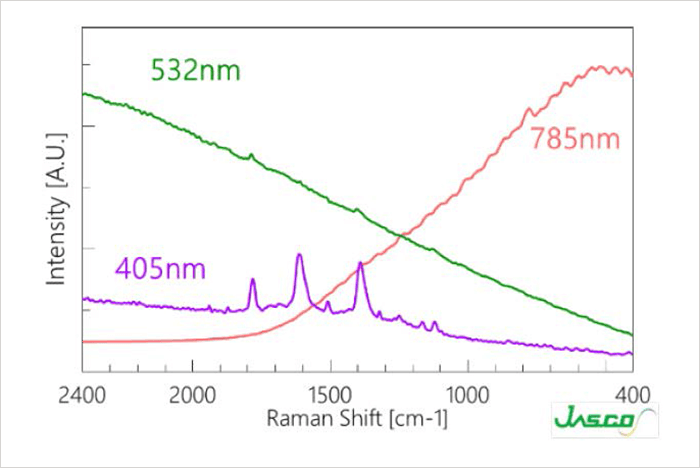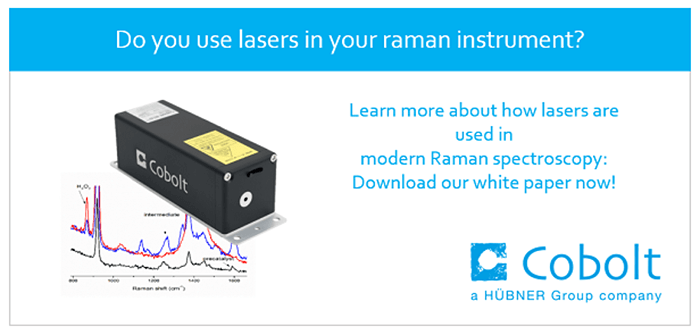Have I selected the right laser for my Raman experiments?
Thanks to rapid technology advancements in recent years, Raman spectroscopy has become a routine, cost-efficient, and much appreciated analytical tool with applications in material science and in-line process control for pharmaceutical, food & beverage, chemical and agricultural industries. Improvements in laser technology, detectors (CCDs and InGaAs arrays), and spectral filters (VBG-based notch filters), along with developments of new schemes for signal generation and detection, have aided Raman instrument manufacturers in overcoming the challenge of weak signals which has accelerated instrument development and market growth. In this white paper, we discuss important performance parameters to consider when selecting a laser for Raman spectroscopy experiments.

Why is the choice of laser wavelength important for Raman spectroscopy?
A number of different wavelengths are commonly used in Raman spectroscopy, ranging from the UV, over the visible, and into the near IR. Choosing the best illumination wavelength for a given application is not always obvious. Many variables must be considered in order to optimize a Raman spectroscopy experiment, many of which are connected to the wavelength selection. To start with, the Raman signal is inherently very weak. It relies on the photon-phonon interaction in the sample material, which is typically a one-in-a-million event. In addition, the Raman scattering intensity is inversely proportional to the 4th order of the illumination wavelength, which means that illumination at longer wavelengths results in a decreased Raman signal. The detector sensitivity is also dependent on the wavelength range. CCD‘s are commonly used for detection of the Raman signal. The quantum efficiency of these CCD devices rolls off fairly quickly beyond 800 nm. For illumination beyond 800 nm, it is possible to use InGaAs array devices, but those are associated with higher noise levels, lower sensitivity and higher cost.
 Raman spectrum of polyimide using 3 different wavelengths. For the green and NIR the Raman signal is buried in fluorescence for 532 nm and 785 nm laser excitation. However it is easily resolved when using 405 nm.
Raman spectrum of polyimide using 3 different wavelengths. For the green and NIR the Raman signal is buried in fluorescence for 532 nm and 785 nm laser excitation. However it is easily resolved when using 405 nm.>> Download the full Application Note as PDF






